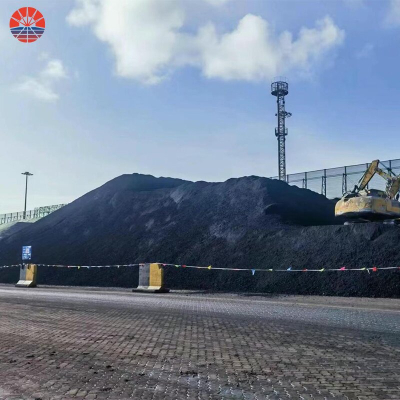The Role Of Using Petroleum Coke In Cement Plants
The primary role of using petroleum coke (petcoke) in cement plants is as an alternative fuel source. Petcoke can be used as a supplemental fuel to coal, which is the traditional primary fuel used in cement kilns. Cement kilns are large, high-temperature rotating furnaces used to produce clinker, which is the intermediate product in cement manufacturing.
Here's how petcoke plays a role in cement plants:
Alternative Fuel: Cement plants often use coal as their primary fuel due to its availability and relatively low cost. However, to diversify their fuel sources and reduce dependency on fossil fuels, some cement plants opt to co-process alternative fuels, including petcoke. Co-processing refers to the simultaneous use of more than one type of fuel in the cement kiln.
Energy Source: Petcoke, like coal, has a high calorific value, which means it contains a significant amount of energy per unit mass. By using petcoke as an energy source in the cement kiln, it can provide the high heat required for the chemical reactions that occur during the clinker formation process.
Lower Carbon Footprint: Compared to coal, petcoke typically has lower carbon content. Using petcoke as a partial substitute for coal can help reduce the carbon dioxide (CO2) emissions associated with cement production, contributing to efforts to lower the cement industry's carbon footprint.
Stability of Supply: The petroleum refining industry produces petcoke as a byproduct, which ensures a relatively stable and reliable supply for cement plants.
Sulfur Content: Petcoke generally has lower sulfur content compared to certain types of coal. Using petcoke can help reduce sulfur dioxide (SO2) emissions, which are a major cause of air pollution and acid rain.
Waste Valorization: Co-processing petcoke in cement plants can be part of a broader waste valorization strategy. Some cement plants also co-process various waste materials, such as used tires, biomass, or industrial waste, as alternative fuels, diverting these materials from landfills and contributing to a more sustainable waste management approach.
It is essential to consider environmental and health implications when using petcoke or any alternative fuel in cement plants. The combustion of petcoke can release pollutants such as nitrogen oxides (NOx) and particulate matter, which can impact air quality and human health. Cement plants must adhere to environmental regulations and emission standards to ensure the proper management and control of emissions.
To enhance sustainability, cement plants are also exploring other cleaner energy sources and technologies, such as using renewable energy, optimizing energy efficiency, and exploring carbon capture and storage (CCS) to mitigate greenhouse gas emissions.
Benefits of using petroleum coke in cement plants
The use of petroleum coke (petcoke) in cement plants offers several benefits, making it an attractive fuel and carbon source in the cement manufacturing process. Some of the advantages include:
High Calorific Value: Petcoke has a high calorific value, meaning it contains a large amount of energy per unit mass. This high energy content makes it an efficient and effective fuel source for cement kilns, providing the necessary heat for the clinker formation process.
Cost-Effectiveness: Petcoke is often cheaper than other traditional fuels like coal or natural gas. Cement manufacturers can achieve cost savings by using petcoke as a fuel source, especially in regions where it is readily available and competitively priced.
Stable Supply: The petroleum refining industry generates large quantities of petcoke as a byproduct. This ensures a stable and consistent supply of petcoke for cement plants, reducing concerns about fuel availability and price fluctuations.
Low Sulfur Content: Compared to coal, petcoke typically has lower sulfur content. Using petcoke as a fuel source in cement kilns can help reduce sulfur dioxide (SO2) emissions, which contribute to air pollution and acid rain.
High Carbon Content: The high carbon content of petcoke provides additional benefits in the cement manufacturing process. Petcoke acts as a supplementary source of carbon, enhancing the fuel efficiency of cement kilns and promoting complete combustion of other fuel sources.
Reduction of CO2 Emissions: The use of petcoke in cement kilns can lead to reduced carbon dioxide (CO2) emissions compared to some other fossil fuels. The higher carbon content in petcoke results in lower CO2 emissions per unit of energy produced.
It is important to acknowledge that the use of petcoke in cement plants has environmental implications as well. The combustion of petcoke releases carbon dioxide (CO2) and other air pollutants, which can contribute to climate change and air quality issues. Therefore, cement manufacturers need to comply with environmental regulations and emissions standards to ensure responsible and sustainable use of petcoke.
In recent years, there has been growing awareness of the environmental impact of using fossil fuels, including petcoke, in various industries. As a result, some cement plants are actively exploring alternative and more sustainable fuels, such as biomass, waste-derived fuels, or renewable energy sources, to reduce their carbon footprint and environmental impact.












